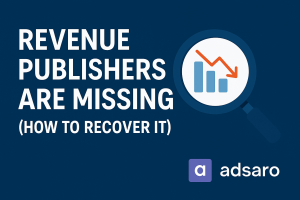In today’s era of hyper-personalized marketing, brands can no longer rely solely on mass-market strategies. Audiences are fragmented, preferences are highly specific, and competition for attention is fierce. This is where micro-campaigns for niche audiences come into play. These small, sharply targeted ad initiatives focus on reaching a narrowly defined group with precision and relevance. When executed properly, micro-campaigns can drive higher engagement, better conversion rates, and stronger brand loyalty than broader campaigns. In this blog, we’ll explore how to plan, execute, and optimize targeted ad campaigns that cater to micro-audiences using smart strategies and the latest tools in hyper-focused advertising.
What Are Micro-Campaigns?
Micro-campaigns are short-term, highly specific advertising campaigns that target a very focused segment of the market. These campaigns aim to connect with niche audiences defined by narrow demographics, behaviors, interests, or locations. Instead of trying to speak to everyone, micro-campaigns speak powerfully to someone. Whether you’re targeting vegan marathon runners in Mumbai or fintech entrepreneurs in Berlin, this form of niche market advertising allows for deeply relevant and compelling messaging that gets noticed.
Benefits of Micro-Campaigns for Niche Audiences
Running micro-campaigns for niche audiences provides a range of strategic advantages that go beyond simple targeting. Here are the key benefits:
1. Reduced Ad Waste
Because you’re only reaching the audience most likely to convert, your budget is spent efficiently. There’s less waste compared to broad campaigns that serve ads to uninterested users.
2. Higher Engagement Rates
When people feel like an ad is speaking directly to them, they’re far more likely to interact with it. Hyper-focused advertising naturally improves engagement because the message is customized.
3. Improved Conversion
Targeted campaigns drive better outcomes. Whether your goal is purchases, sign-ups, or downloads, personalized ad strategies typically yield a higher return because the offer aligns with the user’s specific needs.
4. Easier Optimization
With a smaller audience, results come in faster. This allows you to A/B test, iterate, and refine quickly without waiting weeks for meaningful data.
5. Brand Loyalty & Trust
Because your messaging resonates more deeply, niche audiences tend to form stronger emotional connections with your brand. This fosters loyalty and long-term retention.
6. Better Use of First-Party Data
Micro-campaigns work well with CRM and customer list data. You can build campaigns around purchase history, preferences, or behaviors—making your targeting smarter and more effective.
These advantages make targeted ad campaigns ideal for both emerging startups with lean budgets and established brands looking to dominate micro-markets.
Step 1: Define the Niche Clearly
The foundation of any successful micro-campaign is a well-defined audience. Instead of relying on broad characteristics like age or gender, dig deeper. Ask: What are their lifestyle preferences? What challenges do they face? What kind of language and tone do they respond to? Use tools like Google Trends, Facebook Audience Insights, or even Reddit communities to understand your niche’s behavior. This is where personalized ad strategy begins—by identifying not just who your audience is, but why they should care about your message.
Step 2: Craft a Personalized Ad Strategy
Once you’ve defined your audience, it’s time to create content that speaks directly to them. Your creatives, ad copy, tone, and call-to-action must feel tailor-made. For example, if you’re targeting eco-conscious moms, your visuals should reflect sustainability, and your messaging should touch on emotional parenting themes. Avoid generic content—targeted ad campaigns thrive on specificity. This also means adapting your value proposition to what matters most to the audience, even if that means creating multiple versions of the same ad tailored to slightly different subgroups.
Step 3: Choose the Right Platforms
Your micro-campaign’s success heavily depends on where your audience spends their time. Gen Zs in fashion niches may be on TikTok and Instagram, while B2B decision-makers are active on LinkedIn and Twitter. Niche gaming communities often live on Reddit or Discord. By aligning your campaign with the right platforms, you ensure your hyper-focused advertising efforts are reaching the right eyes. Don’t waste budget trying to reach a professional audience on entertainment platforms. Match the medium to the message for maximum resonance.
Step 4: Segment and Automate the Delivery
Technology is your ally when running micro-campaigns for niche audiences. Platforms like Meta Ads Manager or Google Ads allow you to define granular audience segments based on interests, behaviors, and custom data. You can even upload customer lists and create lookalike audiences to expand your reach slightly without losing focus. Email platforms like Mailchimp or HubSpot allow you to automate personalized email drips based on triggers like clicks, time on page, or downloads. These tools help deliver a truly personalized ad strategy at scale without sacrificing precision.
Step 5: Run Rapid A/B Tests
The beauty of micro-campaigns is how quickly you can iterate. Test different combinations of headlines, images, CTAs, and offers. Try different ad formats—carousel, story, short-form video—to see which performs best. Because the audience is smaller, you’ll get clear signals faster, making it easier to pivot when needed. Use these insights not only to optimize the current campaign but also to inform future niche market advertising efforts.
Step 6: Track the Right Micro-Metrics
Don’t just rely on impressions and clicks. Micro-campaigns for niche audiences are all about engagement depth. Track metrics like scroll depth, time on site, click heatmaps, and bounce rates. Monitor soft conversions too—newsletter sign-ups, downloads, or even shares. These indicators tell you whether your targeted ad campaigns are truly resonating or just grabbing shallow attention. The more granular your tracking, the better you’ll understand and refine your strategy.
Step 7: Scale What Works Intelligently
Once your micro-campaign shows traction, it’s time to think about scaling. But don’t lose focus—expand intelligently. Use lookalike audiences, retarget warm leads, and create variations of winning campaigns for similar micro-niches. You can also repurpose high-performing content across other channels. Scaling a micro-campaign doesn’t mean making it massive—it means amplifying success while maintaining the personalized essence of your hyper-focused advertising approach.
Conclusion
In a digital world driven by personalization and relevance, micro-campaigns for niche audiences are more than just a trend—they’re a strategic necessity. They allow you to cut through noise, deliver meaningful messaging, and build real connections with the audiences that matter most. Whether you’re a brand targeting a new segment or a publisher optimizing ad placements, niche market advertising is the path to precision, performance, and long-term loyalty. Don’t be afraid to go small—because in advertising today, small is powerful.








Leave a Reply